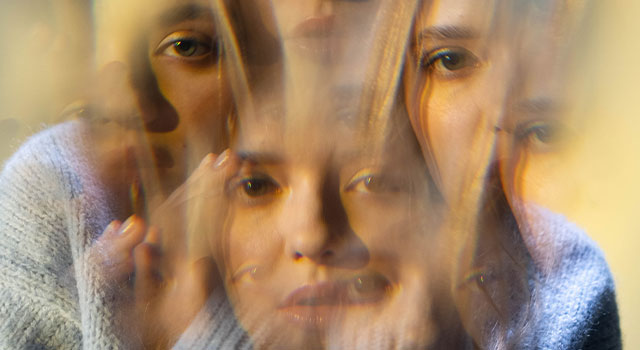 Any eye condition that results in vision loss can lead a person to experience visual hallucinations. Wet age-related macular degeneration (AMD) is no exception. Wet AMD is caused by new blood vessels leaking fluid into the retina, resulting in permanent macular damage and vision loss.
Any eye condition that results in vision loss can lead a person to experience visual hallucinations. Wet age-related macular degeneration (AMD) is no exception. Wet AMD is caused by new blood vessels leaking fluid into the retina, resulting in permanent macular damage and vision loss.
Visual hallucinations caused by vision loss are also known as Charles Bonnet syndrome (CBS) — an infrequent yet disabling symptom of wet AMD. These hallucinations, unrelated to mental illness, can be highly disconcerting and even frightening when they first appear.
The hallucinations have no known cure or single treatment. However, by understanding what causes them, you’ll be able to reduce your anxiety when they occur and establish techniques to get through them with minimal discomfort.
Contact if you're experiencing vision loss and associated hallucinations. We can help you manage your symptoms and help you maximize your remaining vision.
What is Charles Bonnet Syndrome?
It is estimated that 50-60% of people suffering from severe vision loss experience visual hallucinations. Patterns, as well as more complex pictures such as people, animals, flowers, and buildings, can appear during these hallucinations.
This occurs because, in patients with severe eye diseases, such as age-related macular degeneration, glaucoma, or diabetic retinopathy, the eyes no longer send visual signals to the brain as before. Without them, the brain fills the void by recalling images from memory, resulting in visual hallucinations.
CBS was named after Charles Bonnet, an 18th-century Swiss scientist who first identified this condition in his grandfather and then developed it himself.
What Do Visual Hallucinations Look Like?
CBS hallucinations may appear as simple as flashes of light, colors or shapes.
Others may experience more complex structures, such as geometrical grids and lattices.
Landscaped gardens, animals, people, and a procession of costumed characters wearing hats have also been reported by CBS patients.
Some people find their hallucinations enjoyable, while others find them to be an unwelcome inconvenience, especially if they temporarily obstruct vision.
When Do Visual Hallucinations Occur?
CBS hallucinations come and go without warning, typically spanning over months or years, with no apparent reason and no connection to cognitive or psychiatric disease.
The syndrome’s prevalence in patients with visual impairment varies from 10% to 15%, but can also affect patients with other eye conditions or diseases, including glaucoma and stroke.
While CBS is more frequent in those over the age of 80, it can affect anyone at any age. In fact, people can also experience visual hallucinations even if they just have minor vision loss or small blind spots.
What Causes CBS?
Exactly what causes visual hallucinations is unknown, but researchers believe that the interruption or destruction of nerve cells leads to the loss of signals from the eye to the brain. MRIs show that these visual signals ordinarily inhibit some nerve activity in the brain. So when the signals between the eye and brain are missing, there is more spontaneous nerve activity, which is perceived as hallucinations.
How to Manage Visual Hallucinations
Eye movements appear to reduce the severity and duration of hallucinations. Even if individuals have limited remaining vision, eye movements engage visual areas of the brain in people with macular degeneration. Certain types of hallucinations, notably patterns and colors, may be stopped by these motions.
Eye doctors recommend patients consciously move their eyes when experiencing a hallucination.
Try the following exercise:
- Imagine two locations on a wall in front of you that are about 3 feet apart from each other. For 15–30 seconds, stand 3.5 feet away and glance from one place to the other once every second or faster. When looking left and right, don't move your head and keep your eyes open.
- Repeat the exercise if your hallucinations are still there.
The technique is unlikely to work if the hallucinations have not stopped after four or five attempts. However, you might want to try again later.
Other ways to stop a hallucination:
- Look away from the image towards an object on the side of your vision or shut your eyes
- Turn on the lights in the room or, if you're in a brightly lit room, go somewhere darker.
- Get up and engage in physical activity.
If you have wet AMD and are experiencing visual hallucinations, contact . We can help.
Our practice serves patients from Test city, Test City2, Test City3, and Test City4, Test State and surrounding communities.
Frequently Asked Questions with Test Sandeep
Q: Are there risk factors for CBS?
- A: While people of any age can be affected by Charles Bonnet hallucinations, it tends to occur later in life and usually after a sudden deterioration of vision.
Q: Can other conditions cause visual hallucinations?
- A: Other disorders that might cause visual hallucinations include psychiatric diseases and neurologic conditions like Parkinson's disease and Alzheimer's disease. Visual hallucinations can also be caused by a variety of prescription and illegal substances, as well as withdrawal from drugs or alcohol. Speak with your eye doctor if you are experiencing hallucinations.



